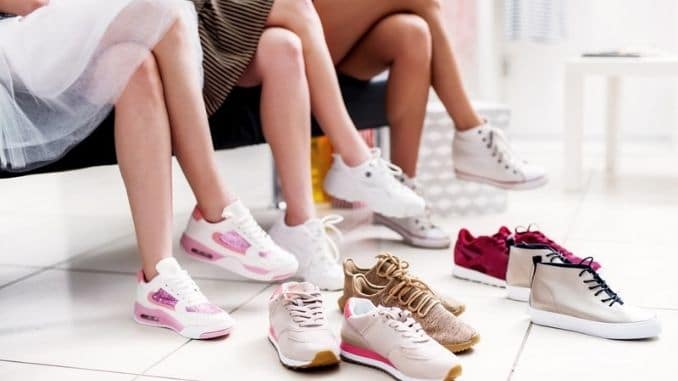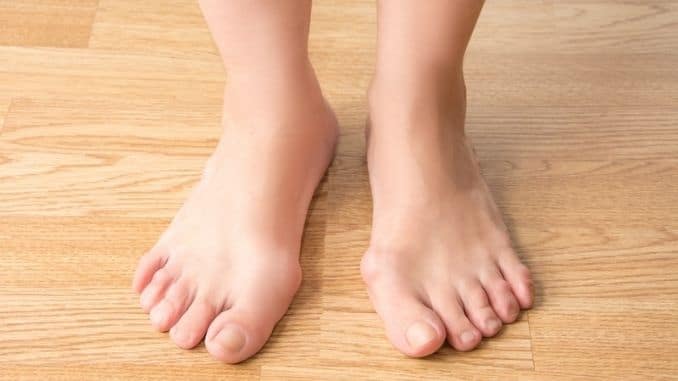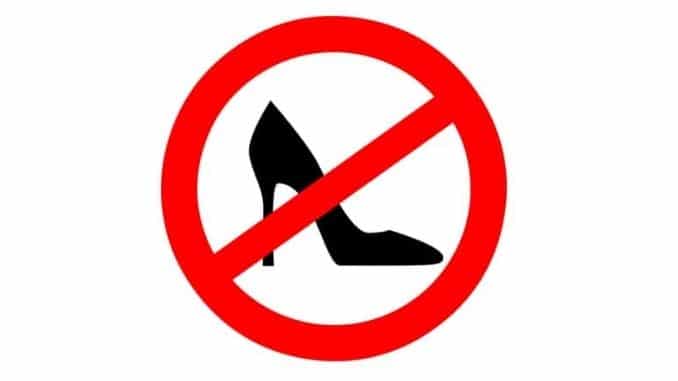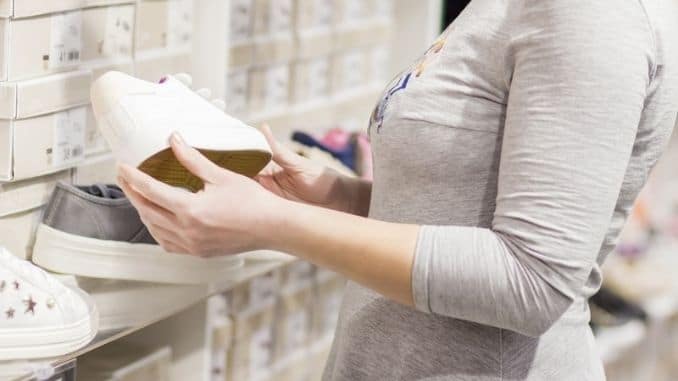
Finding the healthiest and comfortable footwear can be a challenge. Wearing the wrong shoes can cause all sorts of problems in the feet and the rest of the body. Poorly shaped, ill-fitting shoes can lead to plantar fasciitis, bunions, ingrown toenails, and hammertoes. Shoes that aren’t right for your feet can also cause knee, hip, back, neck, and posture problems. It’s crucial to look for shoes that are well-designed for the ideal fit and best level of comfort for your feet.

Our Fabulous Feet
The human foot and ankle contain more than 100 muscles, ligaments, and tendons. There are also 26 bones and 33 joints in each foot. The feet contain more nerve endings than any other part of the body. With these complex and intricately formed feet of ours, we take about 10,000 steps, on average, each day. With all of these moving parts and 10,000 steps, it’s crucial that we take care of finding the best, most supportive, and comfortable footwear available.
What to Look for in Footwear for Happy Feet
We’ve done some research on the best shoes for your feet and the most important factors to consider. Here is a list of what you should be looking for when you’re shopping for shoes.
1. Plenty of Room for the Toes
Perhaps the most important consideration when selecting shoes is the toe box. The toe box is the part of the shoe that covers or protects the toes. Most of the time, the toe box of a woman’s shoe is somewhat narrow and slightly pointed at the tip. However, when you look at your actual foot, you will see that your toes represent the widest part of the foot.
One summer, a couple of years ago, I fell in love with a pair of black strappy sandals. The straps were wide, and they crisscrossed over the toe area. The shoes felt comfortable and seemed to go with everything I wore. So, I wore them nearly every day. Toward the end of the summer, the joint near my left big toe began to throb with pain. It was fine during the day but was swollen and tender every night around bedtime. It took me a while to realize that the cute strappy sandals were causing my pain. After a bit of research, I discovered that I am one of the 55 percent of women who suffer from bunions.
A bunion, also called hallux valgus, is a malformation of the joint at the base of the big toe. The toe is slanted inward, toward the smaller toes and the joint has a bump at the base that sticks out. While bunions are common in men and women, women seem to suffer from bunions more often.
My sandals had a strap that went right over the joint at the base of my big toes. The pressure of the strap had not caused my bunion, but it was aggravating the condition and causing the pain I was feeling at the end of the day. If I had kept wearing those shoes, my pain would have continued to the point that I may have required a surgical resolution. Fortunately, I identified the cause of the inflammation and found some shoes with a wide toe box instead. After switching shoes, I no longer have pain in that joint.
Shoes with a large toe box are excellent for preventing pain around the toe joints and providing a comfortable place for the toes to relax. Another type of shoe that has proven to be beneficial for the toes is toe-separation shoes. They’re funky-looking shoes that look like gloves for the feet ― with a spot for each toe.
While toe-separating shoes may not be particularly fashionable, they are an excellent choice for people who want a comfortable shoe with plenty of room for the toes. Toe-separating shoes are a part of the minimalist shoe movement. Advocates of minimal footwear enjoy the feeling of wearing little shoes is necessary and find traditional shoes to be too constricting.
Look for shoes that allow your toes enough room to move and wiggle freely. As more shoe manufacturers are producing shoes with larger toe boxes that fit actual human feet, it’s getting easier to find comfortable shoes that are also good-looking.
2. Low to No Heel
According to registered podiatrist Caron Orelowitz, “High-heeled shoes are the number one cause of ingrown toenails. They can lead to lower back pain, hip soreness, osteoarthritis, hammertoes, plantar fasciitis, dislocated toes, callouses, joint pain, bunions, and sprained ankles.”
High heels don’t just cause problems ― they also put stress on our already burdened feet. Dr. Emily Splichal says, “A 2 1/2 inch high heel can increase the load on the forefoot by 75 percent.” It may seem like 2 1/2 inches isn’t all that high of a heel. However, even that much can tilt the body forward and throw your entire body out of whack.
When it comes to the height of your shoes, aim for low to no heel. Lower heels ― even in running shoes ― provide a more natural alignment for the feet, spine, and the rest of the body.
3. Good Arch Support
Footwear with proper arch support can protect the feet against injury and pain. According to the experts over at Happy Feet Plus, “Plantar fasciitis is a painful inflammatory condition of the foot caused by excessive stress to the plantar fascia that supports the medial arch. Relief from plantar fasciitis begins when you wear footwear that provides stability and has the proper medial arch support.”
Look at your foot to determine how much arch support you’ll need. If you have flat feet, you don’t need as much support in the arches of your shoes. If you have a particularly high arch, look for shoes with plenty of arch support. Certain insoles can provide arch support as well. You’ll reduce the risk of injury to your feet with good arch support.
4. The Perfect Fit
It’s unclear why, but a huge percentage of women admit to wearing shoes that are too small for their feet. Ladies, for Pete’s sake, no one cares what shoe size you wear. Get shoes that fit you perfectly. Don’t buy shoes that are too small because you wish you had smaller feet. Also, don’t buy shoes that are too big for your feet. Buy shoes that fit you just right.
It’s also true that most people have one foot that’s larger than the other. In fact, it’s rare to have two feet that are the same size. So, when you’re shopping for shoes, make sure you try them on both feet. If one shoe is too tight, you may need to buy a half size bigger for that foot.
5. Comfort Is Key
No one is suggesting that you attend a wedding or formal dinner wearing hiking shoes. However, when you have the option, go with comfort over fashion to keep your feet happy. When you can make it work, choose a pair of stylish, dressy flat shoes, instead of high heels. However, when flats won’t work for the event or the outfit, select the lowest possible shoe with a wedge heel instead of a 4-inch stiletto. Never wear pointed-toed shoes or shoes that curve upward at the toe. Neither of those styles is comfortable or natural. In time, pointed or upward curved shoes can mess up your feet.
6. Shoes That Will Stay on Your Feet
Flip-flops are so popular in the summer. However, they’re a bad choice for the health of your feet. Because they aren’t affixed to the middle and back of your feet, you’re contracting the muscles in your feet constantly as you walk to keep the shoes from falling off. That over-contraction of your feet and toes can cause pain and irritate bunions.
Most flip-flops don’t have arch support, either. A lack of adequate arch support can cause plantar fasciitis. Wearing flip-flops can also result in blisters between the toes from the constant friction while you walk.
7. Let Those Dogs Breathe
Another consideration when looking for quality footwear is breathability. Our feet sweat. In the soles of our feet, we have an estimated 250,000 sweat glands. Fungal infections, like athlete’s foot, thrive in damp, dark environments. Shoes made from synthetic materials that aren’t breathable will encourage the growth of bacteria and fungus.
Choose shoes made from natural fibers that allow maximum breathability. Look for air vents in the shoes. Pick cotton or leather material over polyester or plastic.
Shopping Suggestions
While it’s ever so convenient to shop online for shoes, it’s better to go into a physical shoe store to try on various shoes and make sure you’re getting a good fit. It’s also recommended to go shoe shopping late in the day. Our feet swell a bit throughout the day as we use them. It’s best to try on shoes when our feet are at their biggest.
Keep Your Feet Happy
There are plenty of good-looking shoes out there. However, not all of them are good choices to keep your feet healthy and happy. Keep these seven factors in mind the next time you’re shopping for new kicks. Your whole body will thank you.
Plantar fasciitis is an extremely common condition. If you are suffering from plantar fasciitis, check out Plantar Fasciitis Relief in 7 Days, here!





